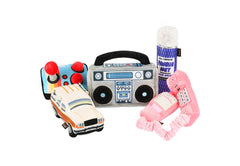Being a pet owner is wonderful. You can always count on your furry friend to greet you when you come home, you have someone to snuggle with at all times, and you are never bored. However, with pet ownership comes great responsibility. You have to care for your four-legged friend, know how to recognize when something is wrong, and be able to treat it. For example, not many people are aware that CBD for cats can greatly help them with anxiety issues.
Fortunately, below, you can find 9 common cat diseases and some tips on recognizing them. The list includes diabetes, feline immunodeficiency virus, heartworms, and many more. So read on and make sure you are prepared for everything that can happen to your beloved kitty!
1. Diabetes
Diabetes is a common disease in cats. It is a metabolic disorder in which a cat cannot produce insulin or does not respond to it properly. Insulin is needed to regulate glucose in the blood. If the body cannot produce insulin, the glucose level increases in the blood and causes many health problems.
The most common symptoms of diabetes are excessive thirst, increased appetite, urination, and weight loss. Other symptoms can vary depending on the stage of the disease. If your cat has any of these symptoms, you should take it to a veterinarian immediately. A vet will perform various tests to confirm if your cat has diabetes and choose the right treatment.
2. Feline Immunodeficiency Virus (FIV)
Feline immunodeficiency virus (FIV) is an infectious disease that can cause changes to your cat’s immune system. It can be transmitted from cat to cat through saliva or other bodily fluids. It can also be caught from unsterilized needles, infected blood transfusions, or from eating infected prey animals.
The typical symptoms of the feline immunodeficiency virus include a loss of appetite, gingivitis, weight loss, and lethargy. Left untreated, it can cause death very quickly. There is no cure for the feline immunodeficiency virus, but it can be managed with proper medication and diet. You should take your cat to a veterinarian immediately if he exhibits any of these symptoms to make sure that you do not miss out on the chance to treat his condition before it gets worse.
3. Heartworms
Heartworms are tiny worms that live in the heart and lungs of your cat. They are spread by mosquitoes feeding on infected cats and then biting uninfected animals. Once inside your pet, they migrate to the heart or lungs and grow into a long tube-like worm known as Dirofilaria immitis. An adult heartworm can grow up to 14 inches long!
The only sign of heartworms is feline coughing and difficulty breathing, but symptoms can be confused with other conditions like asthma or lung cancer. Your veterinarian will diagnose your cat with heartworms using x-rays and blood tests to detect antibodies produced by the body to fight against these parasites. If your cat has been diagnosed with heartworms, your vet will recommend treatment and give you instructions on how to care for your kitty while it’s sick.
4. Cat Bladder Stones (Calcium Oxalate Crystals)
Cat bladder stones are small stones that form in your cat’s bladder due to a high concentration of certain minerals in the urine. They can be caused by diet or if your cat is dehydrated. Symptoms of these stones include frequent urination, blood in the urine, unusual pain, and frequent vomiting.
In severe cases, your cat may stop urinating altogether. If you think your cat has bladder stones, you should immediately arrange an appointment with your vet. A thorough examination will be done to confirm if your cat has bladder stones and find the best possible course of treatment.
5. Cat Asthma
Cat asthma is an allergic reaction of the airways of a cat’s lungs. The airways become inflamed and constricted when they come into contact with allergens such as dust, pollen, mold, smoke, or dander from other animals. Cats have very sensitive respiratory systems, so that they can get easily affected by asthma.
The most common symptoms of cat asthma include coughing, shortness of breath, runny nose, watery eyes, sneezing, and wheezing. To diagnose it, your vet will perform various tests to confirm that your cat is not suffering from any other condition. There are many different types of asthma in cats, and each one requires a different kind of treatment. For some types, the symptoms can be managed with proper medication, while for others, surgery is needed. It is essential to recognize the signs of asthma and get treatment for your cat before he develops severe breathing problems.
6. Feline Infectious Peritonitis (FIP)
Feline infectious peritonitis (FIP) is a viral disease that can affect cats worldwide. It is caused by the polyomavirus, which is a very common virus but comes in two different forms: type 1 and type 2. Both types are extremely dangerous for cats; however, type 2 is more common among domestic cats than in wild ones. Another difference between them is that type 2 does not cause FIP.
This infection causes inflammation of many organs and usually results in death. Usually, kittens are more susceptible to this virus than adult cats; however, there have been adult cats who have contracted it as well. Symptoms of FIP include a high fever, lack of appetite, weight loss, distended abdomen, and death within weeks or even days after contracting the disease. There is no cure for FIP at this time; however, some medications can help relieve symptoms temporarily until your cat passes away.
7. Kidney Failure in Cats
Kidney failure in cats is a condition where kidneys fail to do their regular function, which is to filter blood to remove excess fluid, waste products, and extra water. This causes blood to become overly concentrated with wastes and fluid, which leads to many health issues. Cats can live for months or even years with mild kidney problems. However, if the condition gets worse quickly, it can lead to sudden death.
Symptoms of kidney failure include drinking more water than usual, increased urination (more than usual), vomiting, diarrhea, inability to eat or drink water, and weight loss. If your cat shows any of these symptoms, you should immediately take it to a veterinarian and get it checked out because kidney failure can be treated if caught early enough. If it progresses too fast, it will result in a quick death.
8. Feline Herpesvirus-1 (FHV-1)
Feline herpesvirus-1 (FHV-1) is a common virus affecting cats all over the world. It can cause a variety of signs ranging from watery eyes to fatal diseases such as cancer or FIP. It is spread through saliva and body fluids because it most commonly affects cats’ mouth and upper respiratory tract. Once it enters a cat’s body, it stays there forever; however, it may remain dormant for life or become active at any time in the future, causing serious problems for your kitty.
The most common signs of feline herpesvirus-1 include conjunctivitis, anorexia, nasal congestion, coughing, and sneezing. Some cats develop more severe symptoms like seizures or even brain damage. The only treatment available for this disease is symptomatic alleviation; however, it cannot cure it permanently or stop it from coming back at any time in the future. A vaccine exists against feline herpesvirus-1, but it has not yet been conclusively proven whether it effectively prevents infection. If you want to protect your cat against this virus, you should talk to your vet about vaccination options available on the market today and how they work against feline herpesvirus-1.
9. Feline Upper Respiratory Infection (URI)
Feline upper respiratory infection (URI) is one of the most common illnesses in cats that results in respiratory problems such as sneezing or wheezing, discharge in eyes/nose/mouth/throat, lethargy, fever, etc., but may also result in a more complicated disease process such as pneumonia or chronic non-specific rhinitis (inflammation of nasal mucosa).
Most infections are caused by viruses or bacteria, including mycoplasma species; however, some cases may be idiopathic. Cats that have had URI previously are at high risk of getting infected again, and many times it may be difficult to differentiate between past and present disease states due to similar clinical signs and physical findings.
Conclusion
As a cat owner, you surely want your pet to live a long, happy life. That’s why it is essential to know what each of these conditions is and how you can recognize them to take appropriate action for your kitty.
Make sure that you keep up with regular vet appointments so your veterinarian can catch any of these diseases early. If your cat has had a serious health problem before, make sure that you have all its medical records available to show the veterinarian. Don’t forget about proper nutrition, and remember to give your cat all the love and attention it deserves!






